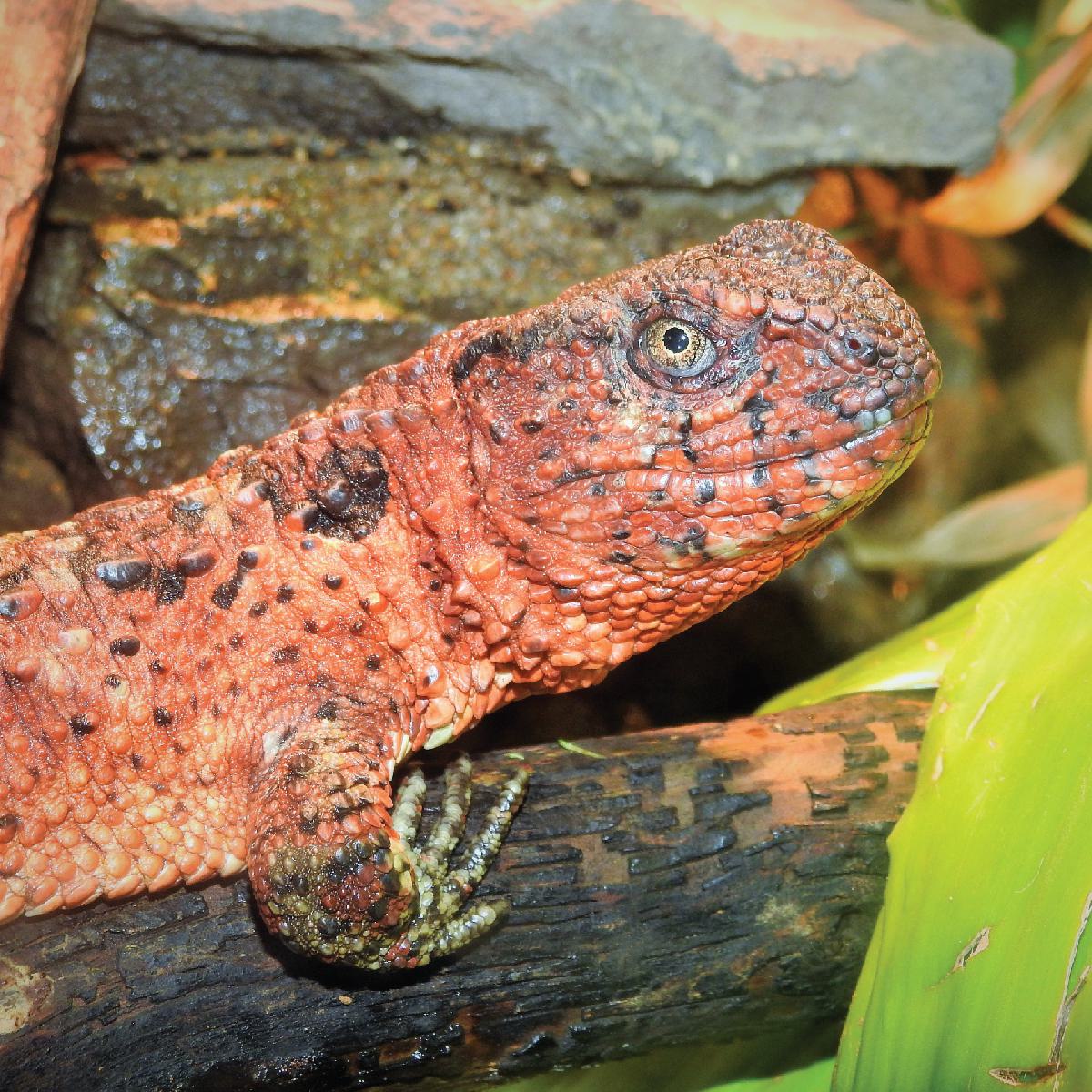
Chinese Crocodile Lizard
Shinisaurus crocodilurus
Did you know?
- Chinese crocodile lizards are territorial; it is common for just one lizard to live in a pond or stream.
- It inhabits only mountainous provinces of China and Vietnam, where it lives in and around clear pools of slow-moving, shallow water.
- Males are larger and more colorful than females.
- Its favorite food is invertebrates, including snails, tadpoles, insects and larvae.
- Breeding season occurs in July and August; females give birth to two to 12 young.
Crocodilian Look-alike
This lizard gets its name from the appearance of its tail, which has an enlarged pair of scales running most of its length, similar to the tail of a crocodile.
Viviparous
Chinese crocodile lizards are viviparous. This means, unlike many reptiles, the give birth to live young.
Threat Level
- Unknown
- Common
- Near Threatened
- Threatened
- Endangered
- Critically Endangered
- Extinct in the Wild
Endangered
The Chinese Crocodile Lizard faces a very high risk of extinction in the wild.
Range
Southern China
Habitat
Near slow-flowing streams or ponds

We care about Chinese crocodile lizards
The Saint Louis Zoo supports Chinese crocodile lizards in the Charles H. Hoessle Herpetarium. Learn more about how we are helping wildlife around the world.
Find this animal in Historic Hill

SAINT LOUIS ZOO ZONE
Historic Hill
Historic Hill is a lovely stroll through one of the oldest parts of the Saint Louis Zoo. From the 1904 World’s Fair Flight Cage to the Spanish architectural flavor of the 1920s in the Bird House, Primate House and Herpetarium to the finishing touches of our thoroughly modern exhibits, this area of the Zoo has a unique ambiance and a nostalgic history that make it a great destination.

